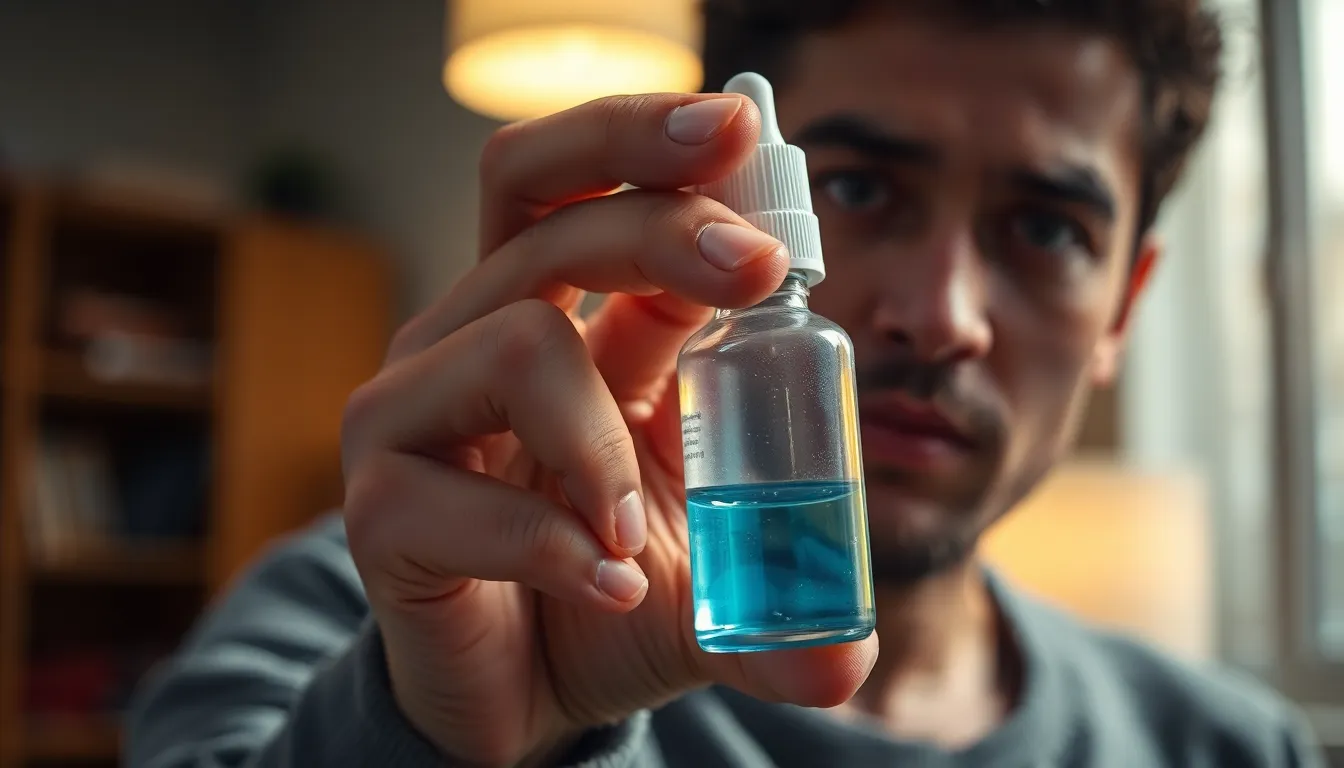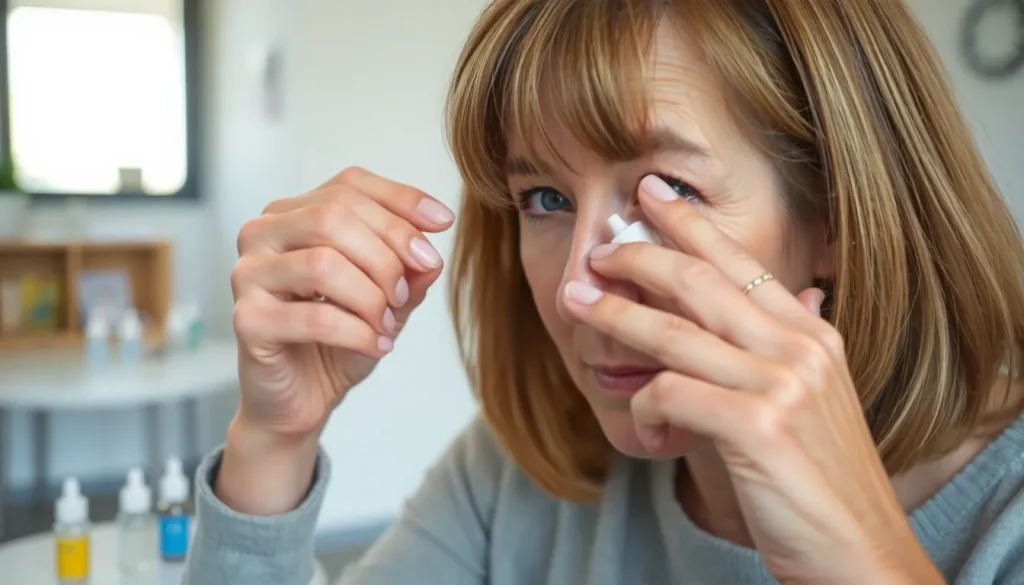Table of Contents
ToggleIn a world where eye drops are a common remedy for dryness, allergies, and irritation, many people wonder about their safety. While these tiny vials offer quick relief, there’s a growing concern about potential side effects and long-term use. Are these solutions truly beneficial, or could they be doing more harm than good?
Understanding the implications of using eye drops is crucial for maintaining eye health. With countless options available, from over-the-counter lubricants to prescription medications, it’s essential to discern the risks and benefits. This article delves into the safety of eye drops, exploring both the advantages they offer and the possible downsides that users should consider.
Understanding Eye Drops
Eye drops serve various purposes in eye care, addressing conditions like dryness and irritation. Awareness of their types and uses can help users make informed choices.
Different Types of Eye Drops
- Lubricating Drops: Lubricating drops, or artificial tears, relieve dryness and provide moisture. They contain ingredients that mimic natural tears, offering comfort for users with mild to moderate symptoms.
- Antihistamine Drops: Antihistamine drops combat allergic reactions by reducing redness and itching. These drops are suitable for individuals experiencing seasonal allergies or other allergy-induced discomforts.
- Vasoconstrictor Drops: Vasoconstrictor drops constrict blood vessels, reducing redness in the eyes. These drops provide quick relief for individuals needing to address redness for cosmetic reasons or irritants, though prolonged use can lead to rebound redness.
- Prescription Drops: Prescription drops treat specific conditions, such as glaucoma or severe inflammation. Healthcare professionals prescribe these drops based on individual needs and eye health assessments.
- Antibiotic Drops: Antibiotic drops fight bacterial infections in the eyes. They are crucial for conditions like conjunctivitis, and a healthcare provider prescribes them based on the infection type.
Common Uses of Eye Drops
- Dryness Relief: Eye drops are commonly used to alleviate symptoms of dry eye syndrome, providing moisture and comfort.
- Allergy Management: Individuals may use eye drops to relieve allergic reactions, reducing redness and irritation caused by allergens.
- Redness Reduction: Eye drops designed for redness reduction offer temporary cosmetic relief, making eyes appear clearer and more vibrant.
- Infection Treatment: Eye drops play a vital role in treating bacterial infections, helping restore eye health through targeted antibacterial action.
- Post-Surgery Care: After eye surgeries, specific eye drops are prescribed to promote healing and prevent infection, ensuring optimal recovery.
- Chronic Condition Management: Patients with conditions like glaucoma may use drops daily to manage intraocular pressure, preventing vision loss over time.
Potential Risks of Eye Drops

Eye drops provide relief for various eye conditions but come with potential risks. Awareness of these risks ensures better eye health management.
Side Effects
Common side effects of eye drops include redness, itching, and burning sensations. Users may experience temporary blurred vision or stinging upon application. Long-term use of certain eye drops, particularly those containing preservatives or vasoconstrictors, can exacerbate dry eyes or cause dependency. Overuse can mask underlying issues, delaying necessary medical evaluation and treatment.
Allergic Reactions
Allergic reactions to eye drops may occur, leading to symptoms such as swelling, redness, or increased tearing. Individuals sensitive to specific ingredients, especially preservatives found in some formulations, face a higher risk. In severe cases, allergic reactions can result in conjunctivitis or other inflammatory responses. Users should consult an eye care professional if they experience any signs of an allergic reaction after using eye drops.
When Eye Drops May Be Harmful
Understanding the circumstances under which eye drops could be harmful is crucial for maintaining eye health. Some aspects to consider include overuse, dependency, and interactions with other medications.
Overuse and Dependency
Overusing eye drops, particularly those with preservatives or vasoconstrictors, can lead to dependency. Users may find themselves needing to apply more drops frequently to achieve the same relief. This cycle not only increases the likelihood of side effects but may exacerbate underlying conditions, like dry eye syndrome. Furthermore, chronic usage can create a dependence on these drops, leading to a situation where natural tear production diminishes. Regular consultation with an eye care professional can help in identifying proper usage and reducing the risk of creating a dependency.
Interactions with Other Medications
Eye drops may interact with other medications, potentially leading to adverse effects. Some ocular medications can amplify the effects of systemic drugs, while others may counteract their efficacy. For instance, antihistamine drops may interact with certain antihistamines taken orally, increasing drowsiness. Additionally, eye drops meant for glaucoma management may alter the effectiveness of medications prescribed for other health conditions. Individuals should inform their healthcare providers about all medications being taken to minimize the risk of harmful interactions.
Benefits of Eye Drops
Eye drops offer several advantages for individuals experiencing various eye conditions. These solutions provide targeted relief, promote better eye health, and are readily available for most users.
Relief from Eye Conditions
Eye drops serve specific purposes, helping alleviate symptoms associated with many ocular issues. Lubricating drops combat dry eye syndrome, offering moisture and comfort. Antihistamine drops effectively reduce allergy symptoms, including itching and redness, making them essential for those suffering from seasonal allergies. Vasoconstrictor drops minimize eye redness by constricting blood vessels, providing immediate cosmetic benefits. Prescription medications target serious conditions, such as glaucoma and infections, by delivering potent ingredients directly to affected areas. Overall, eye drops significantly enhance quality of life for individuals dealing with chronic or acute eye concerns.
Convenience and Accessibility
Eye drops provide an easy-to-use solution for managing eye health. They are widely available over-the-counter, allowing users to quickly acquire the necessary treatment without the need for a prescription. Most drops come in portable bottles, making them convenient for on-the-go application. Many formulations are preservative-free, catering to sensitive eyes and promoting safe frequent use. Users can conveniently integrate eye drops into their daily routines, ensuring consistent care and symptom management throughout the day.
Eye drops can be a valuable tool for managing various eye conditions but they aren’t without risks. Users should weigh the benefits against potential side effects and long-term implications. Awareness of the specific type of eye drops and their ingredients is crucial for safe usage. Regular consultations with an eye care professional can help ensure that eye drops are used effectively and safely. By staying informed and vigilant, individuals can enjoy the advantages of eye drops while minimizing potential harm to their eye health.





